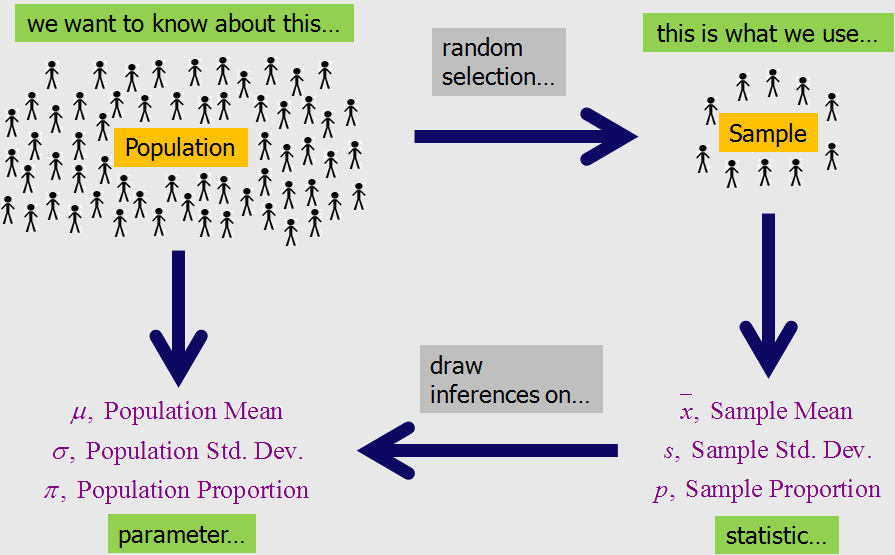Vital terms in Statistics
Population: As the term is self-explanatory, population is nothing but the universe of possible data.
· Example: People who visited a particular website.
Parameter: A numerical value associated with the population.
· Example: Average amount of time people spent on website.
Sample: A selection of observations from a population.
· Example: People who visited the website on a particular time of the day.
Statistic: A numerical value associated with an observed value.
· Example: Average amount of time people spent on a website on a particular day.

Vital terms of Statistics
In the previous article we’ve touched up on what data , however we haven’t understood how we get the data.
Lets look in to that for a bit .
DATA SOURCES
There are basically 2 Types of data Sources
1. Primary Data
2. Secondary Data
Primary Data: Data that is being collected regularly (Data collected on daily basis).
Secondary Data: Data which is already been collected and stored, which might be for a set of days.
Let’s touch a bit on the types of Data sets.
What are Data sets?
A data set is a collection of numbers or values that relate to a particular subject.
Example: The test scores of each student in a particular class is a data set.
Types of Data Sets:
Data sets are broadly classified in to 3 groups namely:
· **Record Data: **Most basic form of which has no relation between records or data fields and every data object has same set of attributes.
Examples**: **Transaction data, data matrix.

#basics #statistics #data #stats #data-science
